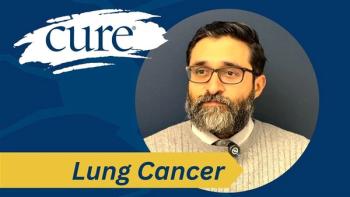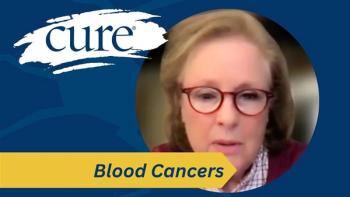
NCCN Launches New Distress Resources for Patients With Cancer
The NCCN created new free, online resources for patients with cancer who are experiencing distress.
Distress can look different on every person. For that reason, it may be challenging for patients with cancer to realize the signs of distress and when they should seek help.
In an effort to change this, the National Comprehensive Cancer Network (NCCN) published the NCCN Guidelines for Patients to empower them on confronting distress after a cancer diagnosis. While the NCCN has been involved with distress management for 18 years, this is the first time a resource has been dedicated to patients.
“If a patient with cancer is struggling, it’s important for them to talk about their challenges with their treatment team,” Teresa Deshields, Ph.D., ABPP, manager, Siteman Counseling Service, Siteman Cancer Center and clinical associate professor at Washington University School of Medicine, said in an interview with CURE. “Having cancer and being treated for cancer are hard enough; anything that can make it easier is worth it. Addressing sources of distress can be helpful in that regard.”
The new supportive care resources are free and can be found
Distress is defined as “an unpleasant experience of a mental, physical, social or spiritual nature,” according to the NCCN guidelines. It can show up in terms of sleep problems, difficulty concentrating, appetite changes, worry, fear, sadness or anger.
“Distress can be driven by practical problems like money worries or by physical symptoms like pain or fatigue,” added Deshields.
The NCCN advises anyone who is experiencing distress to talk with their health care team. They can use screening tools to self-evaluate such as the distress thermometer and problem list, both laid out in the guidelines posted online and on the app.
Additionally, the guidelines explain who is there to help. This may include a social worker, a mental health services professional or a chaplain. The guidelines lay out lists of questions regarding distress and your cancer that you can ask during medical visits. The NCCN also addresses the ways in which distress can be handled such as mood stabilizers, antipsychotics, psychotherapy, complementary and integrative therapies or exercise.
Determining a patient’s level of distress earlier in the diagnosis can improve outcomes in the end. For instance, recent research has found that higher levels of distress are associated with worse quality of life, worse survival and worse adherence to medications and medical appointments, which can be a factor in health outcomes.
This is an area where caregivers and oncology team members can intervene, said Deshields.
“The Patient Guideline can help family caregivers know what to expect as their loved one is diagnosed and treated, and to understand what is typical for someone being treated for cancer,” she said. “Sometimes the caregiver is the first one to notice when a family member is struggling or may be the one to feel more comfortable raising concerns with the oncology team.”
Deshields noted that it is particularly helpful for members of oncology care teams to know about this resource, so they can share it with patients who may not be aware.
“Many patients rely on their oncology team for the best or most up-to-date information about cancer treatment,” Deshields said. “Also, knowing about the various ways to access the new distress guidelines for patients can make it easier for patients to utilize it and use whatever medium suits them best.”





